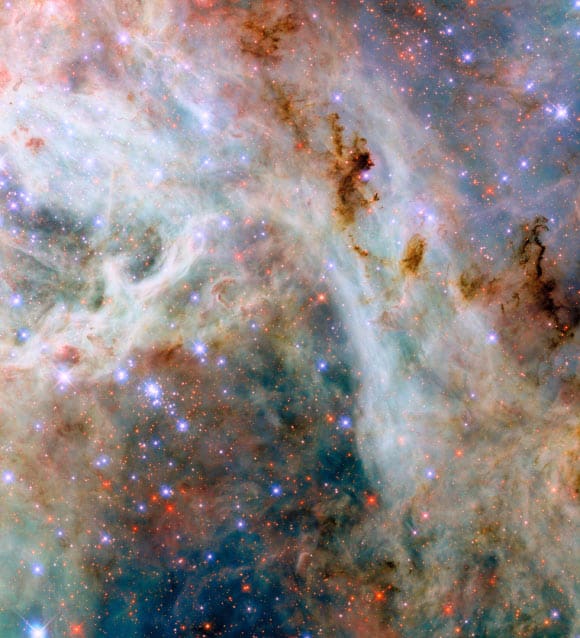Astronomers using the NASA/ESA Hubble Space Telescope have captured a striking image of a portion of the Tarantula Nebula, which is part of a dwarf galaxy called the Large Magellanic Cloud.

Support authors and subscribe to content
This is premium stuff. Subscribe to read the entire article.
Login if you have purchased
